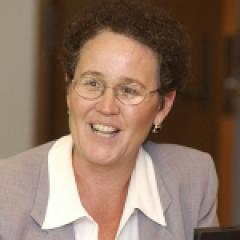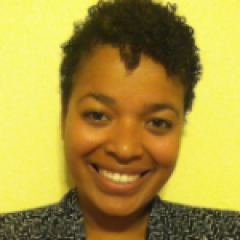Answer Sheet: Why It’s a Big Problem That So Many Teachers Quit - And What To Do About It

(iStock)
Arkansas legislators voted unanimously this month to study exactly why nearly 40 percent of teachers in the state leave the classroom after five years. In South Carolina, the Clemson University Board of Trustees approved initial plans for the state’s first university-led teacher residency program in part to address the problem of teacher attrition. These are just two of many places around the country where teacher turnover is a serious problem — and in some places, it’s getting worse.
This post is a deep, definitive dive into teacher attrition and what can be done about it. It was written by Linda Darling-Hammond, Leib Sutcher and Desiree Carver-Thomas, all of the California-based Learning Policy Institute, which conducts independent, high-quality research to improve education policy and practice.
Darling-Hammond is founder and president of the institute and professor of education emeritus at Stanford University, where she founded the Stanford Center for Opportunity Policy in Education. She is a former president of the American Educational Research Association and former executive director of the National Commission on Teaching and America’s Future, whose 1996 report “What Matters Most: Teaching for America’s Future,” was named one of the most influential reports affecting U.S. education in that decade. In 2008, she served as the leader of President Barack Obama’s education policy transition team. Her book, “The Flat World and Education: How America’s Commitment to Equity will Determine our Future,” received the coveted Grawemeyer Award in 2012.
Sutcher and Carver-Thomas are members of LPI’s Educator Quality Team. Sutcher is co-author of the institute’s January 2015 report, “Addressing California’s Emerging Teacher Shortage” and a report on the national teacher shortage, “A Coming Crisis in Teaching? Teacher Supply, Demand, and Shortages in the U.S.” Carver-Thomas, a former teacher in New York City, is the lead author of “Addressing California’s Growing Teacher Shortage: 2017 Update” and is the co-author of “A Coming Crisis in Teaching?”
Previously, Carver-Thomas taught in New York City public schools for five years. As a graduate student, she consulted with the San Francisco Juvenile Probation Department on strategies for diverting recidivism, and with West Contra Costa Unified School District in Northern California on implementing a full-service community schools’ initiative. She also conducted similar work with the City of Richmond, also in Northern California.
By Linda Darling-Hammond, Leib Sutcher, and Desiree Carver-Thomas
At the start of the 2017-18 school year, the Learning Policy Institute held a forum in Washington, D.C., on teacher turnover as we issued a new report offering an in-depth analysis of how often teachers leave their schools and why. We focused on turnover because about 90 percent of annual teacher demand is associated with teachers leaving the profession, and thus it drives many of the teacher shortages we see today, particularly in high-need schools, where students are at least four times more likely to be taught by uncertified teachers. We heard accounts from across the country about the breadth and depth of the problem:
From the chair of the Prince George’s County, Maryland School Board: “We have to recruit over 1,000 new teachers each and every year just to keep up with the pace of our turnover rate.”
From a teacher in Newark, New Jersey. “It’s like Defense of the Dark Arts in Harry Potter. In just my department, in the science department, we have 15 positions and now entering my sixth year, I have seen 16 teachers leave. Pretty much every position has been lost and replaced in some capacity.”
From a legislator in Washington State: “Sixty-one percent of our principals said that they have had to sub in a classroom because they lacked the certified teachers.”
From the state superintendent in Virginia: “If you were a sixth grader in Petersburg City Schools last year, at no point did you have a licensed math teacher provide instruction to your children. Not a single day. … As I walked with a middle school w/ principal in one of our more challenged urban settings (he told me that) half of his staff — 27 out of 50 teachers — had turned over this year.”
One of our goals was to point out that solving these shortages cannot rest on recruitment alone, since high rates of turnover quickly undo schools’ efforts to bring in new hires. Another goal was to analyze the conditions associated with turnover so that better policy strategies are available to plug the “leaky bucket” plaguing many districts.
Despite overwhelming evidence, some shortage deniers question whether there is really a problem, suggesting that we must not have shortages if we’re hiring more teachers — never mind that more than 100,000 vacancies have been filled by substitutes and untrained individuals because qualified teachers cannot be found to work where they are needed. Others worry that our focus on these issues is a “frightening scare tactic” that might generate “too many … generic efforts to boost teacher retention, like districtwide pay increases.”
We find these arguments puzzling at best. Our research on teacher shortages and the turnover that contributes to them emphasizes how much these conditions vary across teaching fields, types of schools, and locations. We document how they are much more problematic in some regions, states, and districts than others; more widespread in particular subjects; and most pronounced in schools that serve students of color and those from low-income families.
We have highlighted potential policy strategies that can be selected to fit different contexts and needs, identified based on research illustrating their effectiveness, typically derived from findings that compare recruitment and retention outcomes across places where shortages and turnover rates differ. By definition, this means neither the problems nor the need for policy action are the same across settings. The goal is to help policymakers who care about the plight of all students to make better, more cost-effective investments where they are needed.
Those policymakers are desperately seeking effective solutions. As Virginia State Superintendent Steve Staples noted at the September forum:
I was speaking with a well-resourced suburban superintendent a few days ago and he said, ‘You know teacher shortages used to be a problem because they happened to other people. Now they’re a crisis because they’re happening to me.” For many years we had gaps and shortages in some places in Virginia. Today we have shortages in every place in Virginia. In our October survey of the 132 local school divisions in VA we asked: How many funded positions do you have that are unfilled? Last October there were 1,000, meaning there were 1,000 substitutes serving in classrooms teaching children.
Although our focus on teacher turnover and shortages disturbs those who worry that solutions to problems might become “generic” (i.e., widespread), we are not afraid, as they appear to be, that states and districts might get carried away and make unwarranted investments in teachers’ training, compensation, or working conditions to create a more qualified and equitably distributed teaching force. Our data analyses and events in the real world suggest that paying attention to this problem is essential if we are to solve it.
Of course, there are some stable communities with strong salaries and working conditions that don’t need reform. But there is a reason why more than 40 states report shortages in math, science, career technical education, special education, and teachers of English learners, and why most districts serving high-need students have shortages in even more fields.
Overall, teaching conditions here compare poorly with those of other nations. Unlike teachers in Organization for Economic Co-operation and Development (OECD) countries whose salaries are, on average, comparable to those of other college graduates, U.S. teachers are paid 30 percent less on average than other college graduates. U.S. teachers’ wages have declined relative to those of other college-educated workers since the early 1990s, when they were at their most competitive. While salaries vary significantly across and within states, a recent report showed that, in more than 30 states, the average teacher heading a family of four would qualify for several forms of government assistance.
Furthermore, U.S. educators teach the greatest number of hours per week of countries in a recent OECD survey and have among the lowest number of hours for planning. They also have above-average class sizes and teach more low-income students than teachers in the other higher-achieving OECD countries.
Focused responses to the deep shortages in certain teaching fields are needed — as are targeted responses in high-need districts. At the same time, to move policy in productive directions, the full import of the situation must be reckoned with. That requires understanding 1) Whether and how teacher turnover matters, 2) Whether turnover varies in ways that are amenable to policies, and 3) What kinds of policy strategies may make a difference.
How teacher turnover matters
The most important reason that teacher turnover matters is its impact on students.
Research shows that high teacher turnover rates in schools negatively impact student achievement for all the students in a school, not just those in a new teacher’s classroom. These rates are highest in schools serving low-income students and students of color. Constant churn exacerbates staffing difficulties that lead to shortages. Thus, students in these hard-to-staff schools disproportionately suffer the consequences of both turnover and shortages: substitute teachers, canceled classes, and inexperienced, underprepared teachers.
Turnover also extracts significant financial costs. Research shows that teacher replacement costs, including expenses related to separation, recruitment, hiring and training, can range from an average of $9,000 per teacher in rural districts to more than $20,000 in urban districts. A 2007 study estimated a national cost of over $7 billion a year, a price tag that would exceed $8 billion today. In high turnover settings, it’s important to consider what else these dollars could buy — including teacher mentoring and learning opportunities to increase effectiveness — if they weren’t being spent on filling the leaky bucket each year.
If the supply of highly qualified teachers were plentiful, we might feel no need to worry about turnover, even if it is high and costly. That is not currently the case.
In our 2016 report on teacher shortages, we estimated that U.S. schools could be short 100,000 qualified teachers by 2017 if policy trends did not change significantly. This estimate appears close to today’s reality.
A recent Learning Policy Institute review of state teacher workforce reports reveals that in the 36 states that reported such data in 2016 or 2017, at least 87,000 positions were not filled by a fully certified teacher. Assuming the same rates of shortages in the remaining states, the national total of uncertified teachers would be approximately 109,000. This number understates total shortages because some states only report partial data from surveys or count only uncertified teachers in core academic areas. Districts also address shortages by canceling courses, increasing class sizes, or hiring substitute teachers. For example, Florida does not report uncertified teacher counts, but reported 6,628 unfilled vacancies at the start of 2017-18.
Solving shortages is much more difficult if turnover rates remain high, as roughly 9 of 10 teachers hired each year are replacing colleagues who left teaching, two-thirds of them having quit before retirement. When shortages exist, recruiting costs increase — as districts try to recruit from other states and countries and high-need teachers turn down many job offers to take the best one, usually from the most well-heeled district. In addition, the negative effects on student learning climb, as the Band-Aids to address vacant classrooms — substitutes, untrained staff, canceled classes, larger class sizes — undermine learning.
Teacher turnover rates vary substantially and can be addressed by policy
High attrition rates are not inevitable. At its lowest point, in 1992, U.S. teacher attrition was 5.1 percent annually. A recent analysis of wage trends shows that the lower attrition rates in the late 1980s and 1990s occurred when the gaps between teachers’ wages and those of other college graduates were at their smallest. The gaps have grown significantly since then.
At its highest point, in 2008, attrition was 8.4 percent — an increase of about 60 percent. A return to this lower level of attrition would allow us to hire 125,000 fewer teachers each year — virtually ending today’s shortage conditions, with the exception of targeted needs in particular content areas.
Current variations are themselves the result of differing policies. Currently, approximately 8 percent of teachers leave the profession annually and another 8 percent change schools, creating additional turnover at the school level. But annual teacher turnover rates range from 8 percent in Utah (where only 3 percent of teachers leave the profession entirely) to 24 percent in Arizona (where fully 15 percent of teachers leave the profession). Attrition is generally highest in the south and southwest, and lowest in the northeast, where several states have leaving rates of under 5 percent.
These variations are not just a function of chance or demographics. In a regression analysis that controlled for many student, teacher, and school factors — including teaching field and school composition — we found that teacher turnover was significantly higher for those less prepared to teach, in districts with lower salary schedules, and who reported low levels of administrative support.
Since retirement represents only about one-third of overall annual attrition, and less than one-fourth in 30 states, stemming the attrition of early and midcareer teachers can go a long way to reducing turnover and mitigating teacher shortages. Although the teaching force has more young teachers than was once the case, and beginners tend to leave at higher rates, this, too, is not inevitable. Policies influence turnover. Beginning teacher attrition is higher for teachers who are underprepared and unmentored. Teachers with little or no training leave at 2 to 3 times the rates of teachers with comprehensive preparation. Similarly, teachers who lack mentoring and induction supports leave at about twice the rate of those who receive the highest-quality induction.
However, the proportions of teachers receiving both sets of supports have been declining in recent years. In 2012, only two-thirds of entering teachers were prepared before they entered, and only 59 percent received support from a mentor and their principal in their initial year on the job, down from 75 percent in 2008. The problem feeds on itself. One reason some states and districts have seen heightened turnover in the teaching force is that they have not had policies in place that could retain beginners and stabilize the profession over time.
Policy solutions are possible
High teacher turnover is not inevitable: U.S. rates were much lower when salaries were more competitive and working conditions were stronger. Teacher attrition rates are also much lower in high-achieving jurisdictions such as Finland, Singapore, and Ontario, Canada, where attrition averages 3 percent to 4 percent per year and where studies show that teachers are well-trained, supported, and compensated. In Toronto, where a well-designed teacher induction program extends through the first four years of a candidate’s tenure, retention rates for beginning teachers are 98 percent. Not long ago, before these conditions were in place, Ontario had attrition rates similar to those in the United States. Their efforts to improve succeeded.
Several American states, including Massachusetts and other New England states, have teacher attrition rates well below 5 percent. It is not surprising that, like the countries we noted, these states also have policies and conditions associated with increased retention, such as competitive compensation, high-quality training, few entrants through low-quality backdoor routes and positive working conditions.
In short, lower attrition rates are possible. We have seen them abroad, we have seen them in the United States in past years, and we see them in some states today.
Reducing teacher turnover where it is high is not a pipe dream. It’s a policy question. In the many states, districts, and schools where turnover rates are double or triple the national average, progress is possible. If we cut overall attrition from the current levels of 8 percent to 5 percent annually, U.S. hiring needs would decrease by more than 120,000 teachers annually, cutting demand by one-third immediately.
If we did this with high-retention pathways into teaching — like teacher residencies that train teachers well and provide them mentoring — the demand would drop further each year as these teachers stay at high rates rather than cycling through teaching jobs. Adding service scholarships to recruit teachers into shortage fields and locations — paid back with three to five years of service — would further reduce turnover and teacher demand. Policymakers and practitioners can work together to improve the key factors associated with teacher turnover through stronger teacher preparation and support, competitive and equitable compensation where it is needed, and training administrators to provide supportive teaching conditions.
It is hard to understand how building a well-prepared educator workforce that is well-supported and adequately compensated for their work is a “frightening” idea. If we value high-quality schools, we must attend to how we can recruit and retain talented, dedicated people who want to stay and do the vital work of educating our children to become informed and productive citizens. If that is indeed a shared goal, it’s time to turn from denying the problem to working on the solutions.
This blog post has been shared by permission from the author.
Readers wishing to comment on the content are encouraged to do so via the link to the original post.
Find the original post here:
The views expressed by the blogger are not necessarily those of NEPC.



